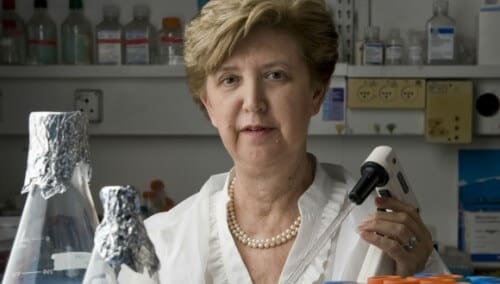Researchers from around the world led by a group from Tel Aviv University discovered Alzheimer's-like features in the brain of an autistic child after his death

An extensive international study led by Tel Aviv University, under the guidance of Prof. Ilana Gozes from the Department of Human Molecular Genetics and Biochemistry, found deposits of the protein TAU (tau) characteristic of Alzheimer's disease in tissues taken from the brain of a 7-year-old autistic boy after his death. The child suffered from ADNP syndrome - a mutation that causes a deficiency in the ADNP protein essential for brain development, and its characteristics can include severe developmental delay, intellectual disability and autism.
In light of the findings, the researchers tested an experimental drug called NAP - developed for Alzheimer's disease - on nerve cells in a model for ADNP syndrome with Alzheimer-like symptoms. The experiment was crowned with success, and the damaged nerve cells returned to normal function.
The research was carried out in close cooperation with researchers from the Blavatnik School of Computer Science at Tel Aviv University, researchers from the Sheba Medical Center and a variety of research institutions across Europe: the Biotechnology Institute BIOCEV in the Czech Republic; Aristotle University of Thessaloniki, Greece, the University of Antwerp in Belgium, and the University Hospital in Zagreb, Croatia. The article was published in July 2020 in the journal Translational Psychiatry from Nature.
Prof. Gozes explains that the current study is based on tissues taken from the brain of a 7-year-old boy with ADNP syndrome, who died in Croatia. When we compared them to tissue from the brain of a young person who does not suffer from ADNP syndrome, we found deposits of the tau protein in the child, which is known to be a characteristic of Alzheimer's disease.
Later, the researchers 'treated' the damaged nerve cells with a medicinal substance called NAP, which was developed in the laboratory of Prof. Guzes and is intended to be used as a cure for Alzheimer's disease. "The NAP is actually a short segment of the normal ADNP protein," Prof. Guzes points out. "When we added the NAP to the neurons representing a mutation in ADNP, the tau protein returned to bind to the cytoskeleton normally, and the cells returned to functioning normally."
Prof. Guzes: "The fact that the NAP treatment was able to restore nerve cell-like cells with damaged ADNP to normal function raises hope that this substance may be used as a cure for ADNP syndrome and its severe consequences, including autism. What's more: since other genetic syndromes related to autism are also characterized by dysfunctional tau protein in the brain, we hope that those with these syndromes will also be able to benefit from NAP treatment in the future. It is important to note that the substance NAP (also called CP201) received the label of 'drug for an orphan disease' from the FDA - the American Food and Drug Administration, and as of today it is in the preparation stages for a clinical trial in children with ADNP syndrome through the commercial company Coronis Neurosciences.
In another phase of the study, the researchers sought to expand the understanding of the effects of the mutation that causes ADNP syndrome. To this end, they extracted the genetic material mRNA (messenger RNA) from the tissues of the sick child who died, and analyzed the expressions of about 40 proteins of that child, encoded by the mRNA. Complete genetic sequencing was also performed to determine protein expression in white blood cells taken from three other children with ADNP syndrome. An in-depth study was performed on all the data obtained in the genetic sequences using advanced computational tools of bioinformatics. The data were compared to online databases of protein expression data in healthy people, and thus revealed a variety of characteristics that are common to the sick children but are very different from the normal expression of those proteins.
Prof. Gozes concludes that "the meaning of the findings is that the mutation that causes ADNP syndrome damages a wide variety of essential proteins, many of which bind to the tau protein, among other things, and also damage its function. This is how various pathological phenomena are created in the brain (and also in other tissues) of children with ADNP syndrome, one of which is the creation of tau deposits, known as characteristics of Alzheimer's disease. The extensive and in-depth knowledge that we have gained through the current research opens the door for further, extensive and diverse research work. We hope and believe that in the end we will reach the goal: developing a drug or drugs that will help children with autism resulting from genetic mutations."
More of the topic in Hayadan:
- Researchers at Tel Aviv University: many genetic mutations that characterize autism and intellectual disability also appear in the brains of Alzheimer's patients
- Research has discovered what happens in the brains of children with autism when they sleep
- Researchers from Ben-Gurion University discovered a unique evolutionary signature in autism genes
- Existing drugs for multiple sclerosis may help patients with Williams syndrome

One response
I wondered when they came back to Israel for autopsy for research purposes, but then it turned out that it was a child who died in Croatia.